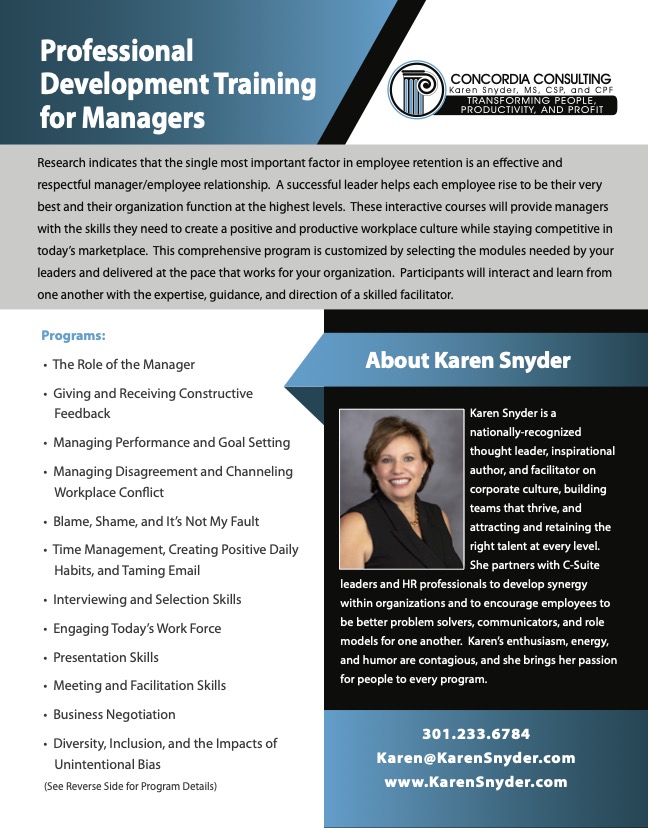
About 30 years ago, my then accountant Corrin casually said to me, “Over time, businesses start to reflect the values and personalities of their leaders.” I was fascinated by this comment. “Really?” I asked. “Yes,” Corrin continued, “Employees need to feel passionate about what they do and they need to feel a connection to the mission. Without that, employees don’t stick around.”
And likewise, clients and customers are attracted to organizations that share their beliefs and values.
A study conducted by Cone Communications found that 87% of consumers said they would purchase a product because a company supported an issue they cared about. In addition, 76% of consumers said they would boycott a company if it supported an issue contrary to their beliefs.
Now, rather than wait for the leader’s values to trickle down, organizations are becoming purposeful about communicating and acting on their core beliefs. Many organizations already have taken the time and energy to develop their vision and mission statements, and now they are drafting statements about how they will serve their communities and contribute to making the world a better place. A new and growing trend is to hire a C-Suite executive, often referred to as the Chief Purpose Officer, to help define and communicate these messages both internally and externally.
But what if your company is small and you can’t devote a senior level position to engagement? Here are some techniques you can implement as a leader at any level.
- If you do not already have a vision and mission statement, develop one! The method you use will demonstrate a lot about your organization. Will you involve everyone in the discussions? Just the senior leaders? Only the CEO?
- Communicate your vision and mission everywhere…on your website, in your newsletter, through your employee communications, and to your customers and clients. If you manufacture a product, put at least part of your mission statement on the product.
- Find a nonprofit or community organization that your company will actively support. Determine how much time, money, and additional resources you will devote to the group.
- Create an engagement survey and identify ways to connect with your employees and encourage their commitment to the mission.
- Make engagement a part of your attraction and retention strategies.
My accountant Corrin was right. Engagement is the key to retaining and motivating both your employees and your customers. Please share with me the strategies employed in your organization. Are they successful?
Twenty-five years ago, my husband and I moved into a newly-built house in a brand new neighborhood. There were just a few other residents at the time and there was a ton of construction. For the first three years, our streets were filled with dirt, noise, and construction workers. As each house was completed, we were excited to meet our neighbors.

We soon discovered that many of our neighbors had children the same ages as ours and that we also shared similar interests. We kept seeing these same neighbors while waiting at the bus stop with our children, while volunteering in the schools, while working out at the gym, and while shopping for groceries. They seemed to be everywhere! If we hadn’t liked them, it would have been a problem, but we not only liked them, we loved and cherished our newly-formed relationships.

As humans, we have a fundamental desire to connect with others. Informal relationships, where people in close proximity engage in frequent interactions and bond with one another, happen at work as well. This phenomenon has been studied and can actually lead to what is called proximity bias. Proximity bias is when those who are physically closer to company leaders enjoy greater influence and advancement opportunities. Unfortunately proximity bias can create a less equitable work environment since remote employees can feel like their career trajectory lags behind their in-office peers, simply because they are less visible.
So, how can organizations encourage a thriving in-person office community while at the same time offering an inclusive environment for remote workers?
As with many challenges, the first step is to begin talking about the issue. Through open and honest communication, obstacles can be identified and solutions proposed.
It’s very helpful for meetings to include a virtual option, and information sharing should be done both in writing, and when possible, in person. Written documentation of all communication should be shared through a central digital platform.
In order to ensure that promotion decisions and bonus opportunities are fair, it is critical that performance appraisals measure and analyze an employee’s full impact.
Concordia Consulting can help your organization with the new challenges of a post-pandemic workplace. And, if your business is successfully navigating the demands of in-person, hybrid, and remote work, please share your achievements with us!








